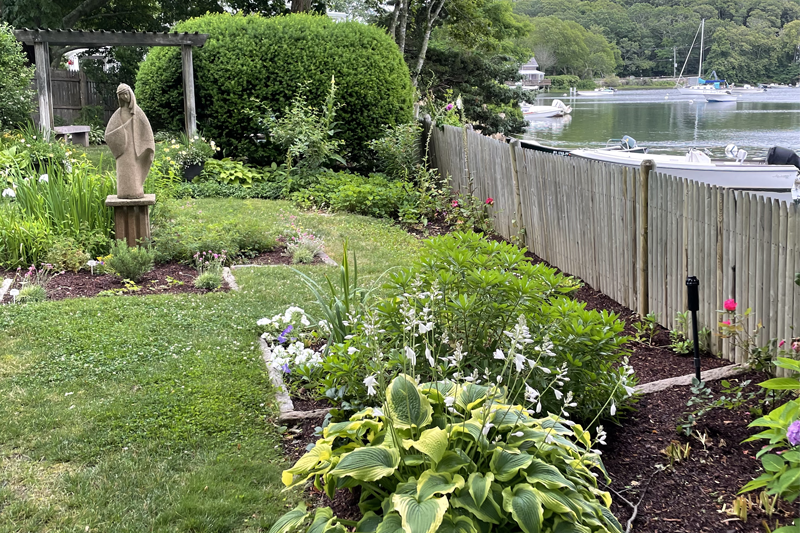Blogs

Serene Stop-Off: The Mary Garden that Inspired a Movement
By Sarah B. Cahalan
Thanks to the John Stokes and Mary’s Gardens archival collection, the concept of a Mary Garden is familiar to many at the University of Dayton. Mary Gardens have their origins in medieval European flower symbolism, where flowers such as roses and lilies and marigolds acted as physical reminders of particular characteristics of the Virgin Mary. John S. Stokes Jr. and his collaborators are credited with popularizing the practice in the United States, as well as with making the concept more accessible: Marian container gardens, Marian herb gardens and Marian plant lists for different climates.
Stokes cited a Mary Garden in Massachusetts as the origin of his work on this project. The Woods Hole garden, established in 1932 by Frances Crane Lillie, is across the street from St. Joseph Chapel and across the marina from Woods Hole Marine Biological Laboratory, where Lillie’s husband worked. Lillie conducted research into the symbolic meanings of flowers and established her garden adjacent to the Angelus Tower she had also commissioned for St. Joseph’s. Looking back at historical records of Lillie’s work at Woods Hole, it is interesting (to this librarian, anyway) that books and reading were part of her plan for the space. The garden included a “rack of books,” which visitors could borrow as long as they were returned by the end of the summer. The garden was there in the 1940s, but by the 1950s it was not well-maintained (Lillie was in ill health and died in 1958). It was restored in 1982 to mark its 50th anniversary — in part thanks to Stokes, whose research had documented the symbolic significance of hundreds of plants, making the parameters of a Mary Garden much less restrictive.
Unplanned visit
I visited the Woods Hole Mary Garden on a cloudy day in early July 2021 — an impulsive stop prompted by terrible Cape Cod traffic. It was reassuring to see that the garden is still there and well-tended. (Gardens require gardeners, and gardeners sometimes get sick or busy or lose interest or move away!)
I am a novice myself, but I believe there were roses, foxglove, hostas, a variety of lilies, lavender, thyme, rosemary and a dogwood tree, among other plants; more important than the specific plantings, there was peaceful space to rest and think. I’m grateful the parish hasn’t sold what must be expensive real estate, rather leaving it open for visits from the public.
The rack of books has been replaced with a Little Free Library from which visitors can help themselves. The statue of Mary is still standing, as it was when Stokes visited in 1982. A statue of St. Joseph, Workman, designed by Ade Bethune for the Mary’s Gardens movement, is there as well in a small enclosure to protect it from the elements.
Gratitude for moments of grace
It was a privilege to spend some time in this space, maintained over the decades thanks to the work of gardeners — a testimonial of generations of love for the Virgin Mary. My 3-year-old companion especially enjoyed looking at the boats in the water, which comes right up to the garden’s edge!
More about the collection
More information about the John Stokes and Mary’s Gardens archival collection, including a collection overview, a detailed finding aid and a content inventory, is available in the University Libraries archives catalog.
— Sarah Burke Cahalan is an associate professor and director of the Marian Library.





